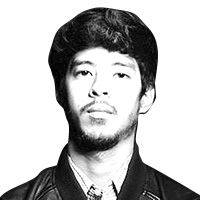Power Grab: The app formerly known as Grab Taxi

As former place of worship, the White Rabbit seems more like a wistful venue for fairytale weddings rather than a stomping ground for a startup’s press conference.
It is a point not lost on Anthony Tan, CEO and co-founder of Southeast Asia’s largest taxi-hailing app, Grab Taxi. In fact, he actually got married right in this place. “I’m still in my wedding jacket so not much has changed,” he said as he prepared to unveil GrabTaxi’s new look and name, ‘Grab.’
Holding Grab’s rebrand announcement in a restored 1930s chapel is reflective of the brand’s new direction, which sports a refreshed look that takes its cues from the infinite possibilities of the road ahead.
“It’s about making sure one brand encapsulates all the different services. It is very important that it’s not just a logo, it is an identity to reinforce us as a leader in the region,” Tan said.
Grab is present in six countries in SEA and has a 95-percent market share of third-party taxi-hailing apps, counting the Philippines, Malaysia, and Singapore as its most active markets. It has also completed another round of funding, receiving $350 million from investors (including Didi Kuaidi, China’s largest taxi-app firm), totaling its investments to $700 million.
Ditching the vehicle in its name is more of a simplication rather than a point to drive the rebrand home; it is a signifier of the company’s growth. Since its launch in 2012, it has expanded beyond taxi service and into more transport products such as delivery and pickup (GrabExpress), carpooling (GrabHitch), and motorcycle (GrabBike). It came to a point that all these services are being sought out by a lot of people, it became confusing. Commuters looking to access the app didn’t know these services are all under the GrabTaxi app.
“We just did so many other things and people got really confused,” shares Cheryl Goh, Grab’s vice president of marketing. “The profile of our users is different: car users, bike users, hitch users, so when we acquire them through different channels, some of them go to the app store and try to download ‘GrabBike’ or ‘GrabCar’ [and] they can’t find it. So [this rebranding] comes from that consumer insight.”
This user-centric approach has long become the core of Grab. Even Tan uses GrabTaxis to go around so he can talk to their drivers and get to know them and find levels of consistency in their service. They call it ‘hyperlocal,’ integrating big data analysis and on-the-ground information from the areas they are entrenched in. During the launch, a real-time map shown at the demo displays a map of Metro Manila covered by swathes of red, green, and yellow, depicting Grab’s cab-to-customer matches in Manila’s various points. Understandably, rush hours in business districts are reds, which means there is a huge demand not being met. This is where Grab’s local team comes in, directing their drivers to areas where they should be headed to address the deficit.
“We can grow by listening more to our drivers and customers. We can have real local solutions for real local problems,” Tan says.
 Grab CEO and co-founder Anthony Tan at the Grab rebrand launch in Singapore. The Philippines was Grab’s second market after it opened in Malaysia in 2012.
Grab CEO and co-founder Anthony Tan at the Grab rebrand launch in Singapore. The Philippines was Grab’s second market after it opened in Malaysia in 2012.
Now that Grab has expanded its portfolio, it has also invested in ramping up its R&D department. It opened its R&D center in Singapore last April 2015 and another engineering center in Seattle this month. Grab’s VP for engineering Arul Kumaravel was based in Seattle prior to joining Grab, thus knowledgeable of the city’s wealth of talent as he used to lead product strategies and development for companies such as Amazon and Microsoft.
Grab co-founder Tan Hooi Ling is optimistic about Grab’s R&D teams to make the app a crucial key in solving transportation challenges in the region.
“Data gives you more predictive rides, making sure passengers can get faster and easier rides and ensuring drivers earn more money and [manage their time efficiently],” she says.
The rebranded app, now available on the App Store and Google Play, is a result of this intensified product development. Retries are now automatic for booking attempts; driver tracking is now live, which makes time estimate more accurate, ‘flash’ searches aggregate results for both GrabTaxi and GrabCar that are closest to the user; and a ‘two-click booking experience’ personalizes pick-up and drop-off points based on the user’s frequented places. A new feature, GrabWork, has also been rolled out, which enables companies to register corporate accounts for their employees using Grab for offical business.
Though Grab’s growth indicators reflect a robust company, Goh sees that it has a long way to go to “outserve” their customers. They recently held “Grab Freedom Day” in the capitals of the six countries they are in, where over a hundred Grab employees, including their management team, served as Grab drivers for a day.
“A lot of things that we do are new. It’s about pushing the boundaries and being daring as a business and a brand. We are about being authentic, being real, and understanding who our cosumers are. Grab Freedom Day is [about reminding] ourselves, as an authentic brand, what it’s like to be a driver, what it is like trying to sit there and get a passenger and talk to a passenger. We are always true to that. We understand that you cannot serve your customers if you have no idea of what they’re like,” Goh says.















